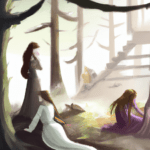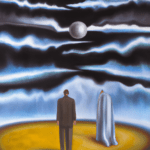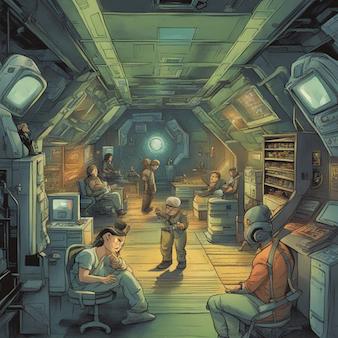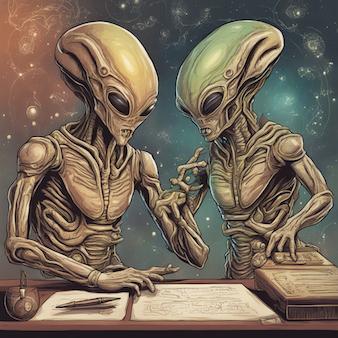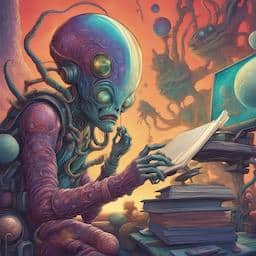Science fiction is a genre that has captured the imagination of readers and moviegoers for decades. From the pioneering works of Jules Verne and H.G. Wells to the modern masterpieces of Isaac Asimov and William Gibson, science fiction has been an endless source of inspiration for those who seek to explore the boundaries of human knowledge and imagination. But what makes a compelling science fiction plot? In this article, we will provide you with ten tips for crafting a science fiction story that will keep your readers or viewers on the edge of their seats.
Guide to Crafting a Science Fiction Plot
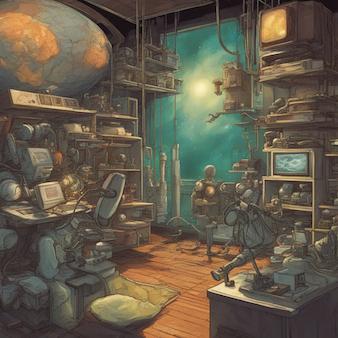
- Start with a central idea: The best science fiction stories usually start with a central idea, a concept that is both intriguing and thought-provoking. It could be a scientific or technological breakthrough, a social or political issue, or a philosophical or existential question. Whatever it is, it should be something that challenges our understanding of the world and pushes us to imagine new possibilities. For example, the central idea of The Matrix is the concept of a virtual reality that is indistinguishable from the real world.
- Create a believable world: One of the strengths of science fiction is the ability to create entirely new worlds that are rich in detail and complexity. But to make those worlds compelling, they need to be believable. This means that you need to think about the science, the technology, the society, the culture, and the history of your world, and make sure that they are consistent and plausible. Don’t forget to also consider the rules and limitations of the world you create, as these can add to the tension and conflict of the story.
- Develop complex characters: In science fiction, characters are just as important as the world they inhabit. The best science fiction characters are complex, multidimensional, and relatable. They should have their own histories, motivations, and conflicts, and they should react to the challenges and changes of the story in realistic and interesting ways. Whether your characters are humans, aliens, robots, or something in between, make sure that they are fully realized and memorable.
- Use conflict to drive the story: Every good story needs conflict, and science fiction is no exception. Whether it’s a clash of cultures, a battle for survival, or a philosophical debate, conflict can add tension, drama, and excitement to your story. Make sure that the conflict is rooted in the world you’ve created and that it affects your characters in meaningful ways.
- Think about pacing and structure: Pacing and structure are crucial for any story, but they are especially important for science fiction. Because science fiction often deals with complex concepts and world-building, it can be easy to lose your audience if the story drags or becomes too convoluted. Make sure that your story is well-structured, with clear arcs for both the plot and the characters. Use pacing to keep the story moving, and don’t be afraid to vary the tempo to match the needs of the story.
- Embrace the unknown: One of the hallmarks of science fiction is the exploration of the unknown. Whether it’s an alien world, a new technology, or a philosophical question, science fiction is all about asking “what if?” and imagining the answers. Embrace the unknown in your story, and don’t be afraid to take risks and challenge your own assumptions. Sometimes the best ideas come from unexpected places.
- Consider the implications of science and technology: Science and technology are at the heart of science fiction, and it’s important to think about their implications for the world and for humanity. Whether it’s the promise of utopia or the threat of dystopia, science and technology can have profound effects on our lives and our societies. Consider the ethical, social, and political implications of the science and technology in your story, and use them to add depth and complexity to your world and your characters.
- Balance exposition with action: Exposition is necessary for science fiction, but it can also be a challenge. Too much exposition can slow down the story and bore the audience, but too little can leave the audience confused and disengaged. To balance exposition with action, try to integrate the world-building and the backstory into the story itself, rather than dumping it all in one place. Show the audience the world and its history through the actions and decisions of the characters, and let them discover the story as it unfolds.
- Use themes to add depth: Science fiction is often used to explore themes that are relevant to our lives and our society, such as the nature of humanity, the role of technology, and the consequences of our actions. Use themes to add depth and meaning to your story, and to make it more than just a collection of cool ideas and images. Think about the message you want to convey and how it relates to the story and the characters, and use it to create a story that resonates with the audience.
- Don’t be afraid to break the rules: Finally, don’t be afraid to break the rules of science fiction. While it’s important to create a believable world and to be consistent within that world, science fiction is also a genre that thrives on innovation and experimentation. Don’t be afraid to take risks, to try new things, and to challenge the conventions of the genre. The most memorable science fiction stories are often the ones that push the boundaries and break the rules.
Crafting a compelling science fiction plot is all about balancing innovation with believability, action with exposition, and depth with entertainment. By starting with a central idea, creating a believable world, developing complex characters, using conflict to drive the story, thinking about pacing and structure, embracing the unknown, considering the implications of science and technology, balancing exposition with action, using themes to add depth, and not being afraid to break the rules, you can create a story that captures the imagination and inspires the mind.
Keywords: science fiction, plot, central idea, believable world, complex characters, conflict, pacing, structure, exposition, themes, science fiction plot, compelling science fiction plot, crafting a science fiction plot, creating a science fiction plot, science fiction plot creation
Check out our Novel Writing Workbooks
Check out Little Tree Food Forest for articles on food forests and homesteading.
Check out FoodieScapes for articles on growing, fermenting and preserving food
Check out StoryScapes.World for articles on writing.
Subscribe to our newsletter to get information delivered to your inbox on how to write a book, outlining your novel, keeping journals, marketing your novel, self-publishing, writing poetry and more.



